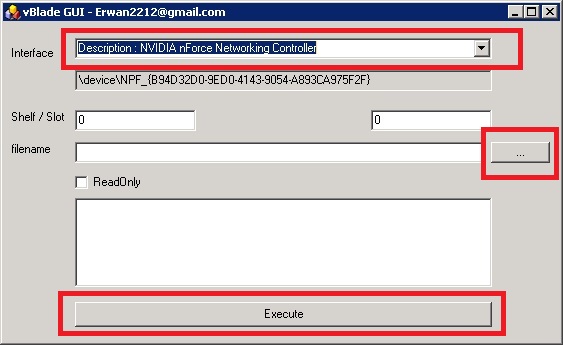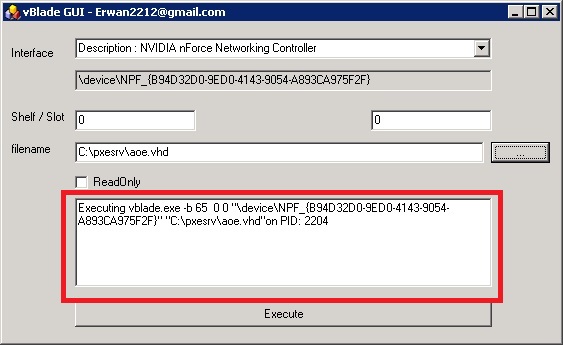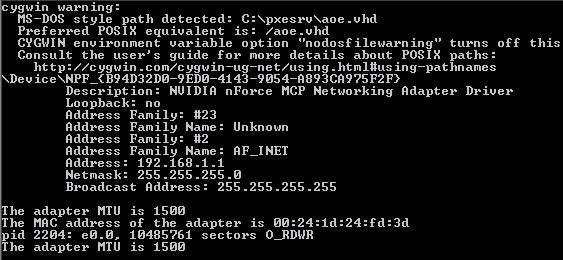

The ATA over Ethernet (AoE) Protocol was developed by Brantley Coile and Sam Hopkins of Coraid as a low cost Storage Area Network solution. AoE devices (Targets) are referred to as Blades -
AoE is described by its developer as "...an open standards based protocol that allows direct network access to disk drives..." It utilises existing and widely available Ethernet for disk access over a local network. Connecting to storage blades using shelf and slot addresses, the storage blades appear as local disks.
vBlade, a Virtual Blade Emulator, can be used as an alternative to hardware blade targets. A Windows port of the Linux vBlade software was compiled by Cristian A. Magadan. The Windows port supports fixed type VHDs, fixed size RAW files and SPARSE type RAW files - EXPANDABLE type VHDs are not supported. The software Target has retained the use of (virtual) shelf and slot addresses to access virtual storage.
You will need to obtain the following files -
Assuming you are using the vblade files obtained from the link above, extract the files from the .zip archive (to C:\pxesrv\vblade\) - no installation is required.
vblade is a command-line tool and uses the following syntax -
Where -
The adapter name does not use the most user friendly syntax - read the instructions in C:\pxesrv\vblade\README.win32 for help identifying the network adapter name, or alternatively use the vBlade GUI. The vBlade GUI can be used to generate a command and launch vblade. Run C:\pxesrv\vblade\vGui.exe.
Ensure the correct network adapter is displayed in the Interface field (select a different interface as required) > Edit the Shelf / Slot as required > type the name (with path) to your disk image file in the filename field (or use the browse button ...) > Click on the Execute button -

Clicking on Execute will launch vBlade - the command generated by the vblade GUI will be displayed in the field highlighted in the screenshot below -

The command can be copied from the vBlade GUI for use on a command-line or in a script. Using the output displayed in the screenshot above, the command for running C:\pxesrv\aoe.vhd as an AoE Target on network adapter \device\NPF_{B94D32D0-9ED0-4143-9054-A893CA975F2F} (using shelf 0 and slot 0) is -
If you prefer to use the command-line then read the instructions in C:\pxesrv\vblade\README.win32 for help identifying the network adapter name.
The screenshot below shows the vblade Target running on the Server -
.

Document date - 28th February 2017(DRAFT)